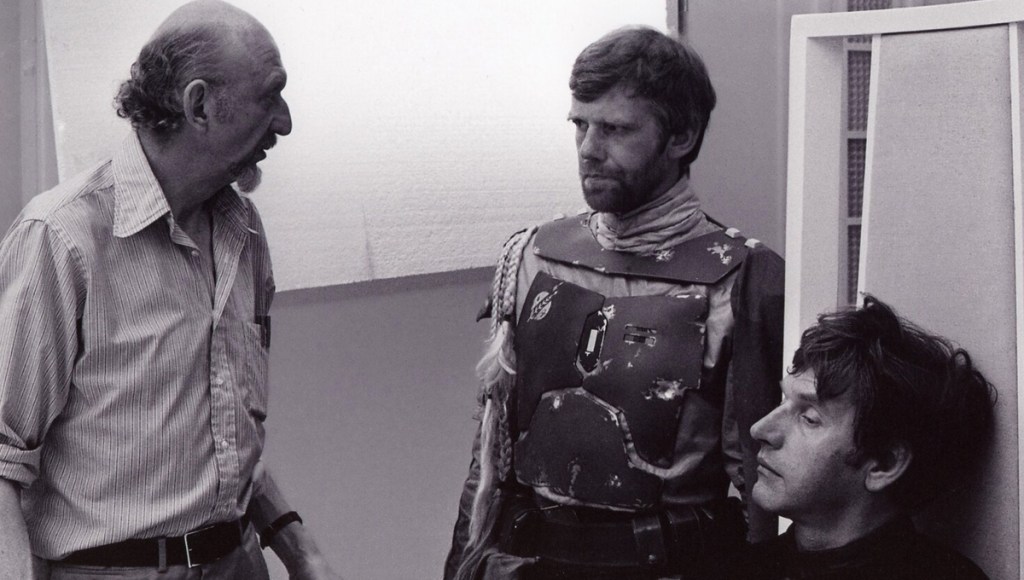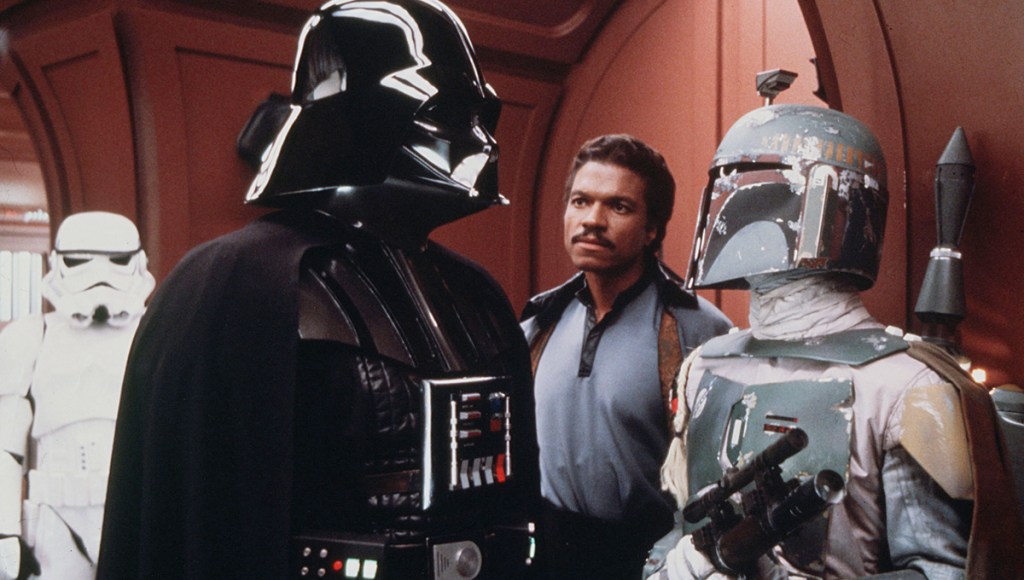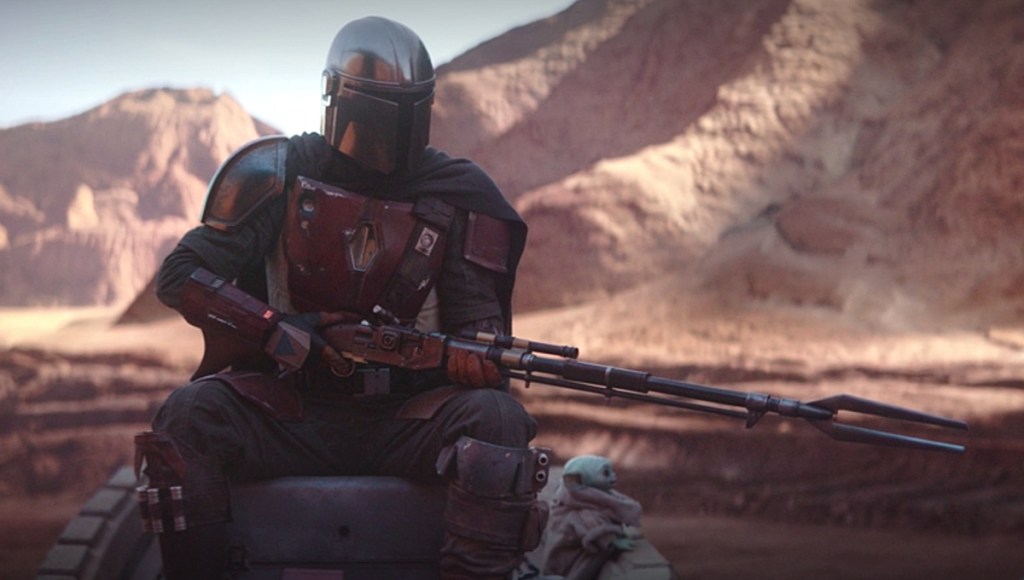Boba Fett’s green, T-visored helmet is a menacing visage that’s nearly evocative of Star Wars as Darth Vader’s; one first embodied on film by actor Jeremy Bulloch, who, sadly, has passed away on December 17 at the age of 75. However, the legacy that Bulloch leaves behind has proven far greater than a character with minimal screentime and dubbed lines seemingly had any right to possess. It’s a legacy to which hit Disney+ series The Mandalorian owes a great deal of thanks.
Bulloch, born in Leicestershire, England on February 16, 1945, wasted little time getting himself onscreen with uncredited roles—while still an adolescent—in 1958 films Violent Playground and Titanic tragedy movie A Night to Remember, continuing to work steadily for years in U.K.-aimed films and television shows. He fielded a four-episode 1974 run as Hal the Archer on Doctor Who (opposite Jon Pertwee’s Third Doctor); his second run on the series, having previously fielded a three-episode role in 1965 with William Hartnell’s First Doctor. He was also visible in 1977’s The Spy Who Loved Me (with Roger Moore’s James Bond) as a crewman on the HMS Ranger. However, that decade’s end would yield his defining role.
Fate would land in Bulloch’s lap in 1979 when his half-brother, Robert Watts, an associate producer for 1980 Star Wars sequel The Empire Strikes Back, offered what would become a career-defining role as bounty hunter Boba Fett. While the role put Bulloch in the highly-anticipated sequel to the world’s biggest blockbuster, it came with the crucial caveat of hiding his face inside a helmet, with his lines eventually dubbed over, seemingly making it more of a stuntman’s gig. Indeed, as Watts told StarWars.com of the almost blue-collar nature of Bulloch’s casting, “I’d never managed to give Jeremy a job on film. So, I rang him up and said, ‘If the suit fits, the part’s yours.’ He came in and it fit.”

Thus, Bulloch was tasked with bringing to life a character who, at that point, existed as a vague concept, conceived by designers Ralph McQuarrie and Joe Johnston, and eventually debuted in animated form for the notorious 1978 Star Wars Holiday Special (voiced there by Don Francks,) before taking shape as Kenner’s mail-away action figure (one that’s extremely valuable these days). Consequently, Bulloch may have been the first actor to play Boba, but he didn’t exactly originate the character. Moreover, it wasn’t even his only role in Empire, since he also fielded the minor (and unhelmeted) part of Lieutenant Shekil, the Imperial officer who was holding Leia on Bespin as she tried to warn a just-arrived Luke about Vader’s trap. Yet, that fact didn’t prevent the actor from finding a way to put an unforgettable stamp on the seemingly perfunctory role of Fett.
Read more
“I thought of Boba Fett as Clint Eastwood in a suit of armor,” Bulloch said of his initial approach the part, according to StarWars.com. Thus, inspired by Eastwood’s Western films—notably the ruthless antihero elements from his 1960s Spaghetti Western trilogy run as “The Man with No Name” for director Sergio Leone—Bulloch was able to project an attitude through Fett that didn’t necessarily reflect what the Empire script demanded. While Fett was simply in the film to be the Imperial-contracted bounty hunter who—after cleverly out-foxing his competitors—successfully tracked the Millennium to its destination of Bespin, Bulloch’s nuanced physical performance told audiences everything they needed to know about the character through his movements and gestures.

Bearing his Eastwood-inspired demeanor, Bulloch’s Fett had an ominously calm stance and constantly cradled his rifle in a way that made you believe that he could, in a blink of an eye, drop anyone stupid enough to run afoul of him. This was immediately clear from the first moment we saw him in Empire, standing amongst the other bounty hunters on the bridge of Darth Vader’s Star Destroyer, being specifically called out by the villain, who said “I want them alive, no disintegrations,” to which he—with shocking temerity—insolently responds, “as you wish.” We’d see more of that attitude later in the film when he protests to Vader of his prize, Han Solo, being put in carbonite, “What if he doesn’t survive? He’s worth a lot to me,” to which an uncharacteristically conciliatory Vader promises compensation if Han dies. Indeed, anyone who can get away with talking to Darth Vader like that must be worthy of interest. In fact, at one point Boba was eyed to be the primary villain of the threequel that we now know as 1983’s Return of the Jedi.
Interestingly, it was actor Jason Wingreen who delivered Fett’s lines in Empire (he had none in Jedi, save for a scream track), bringing a complementary gruffness apropos to the character’s Western inspiration. That element, however, would be one of many casualties in the 2004 DVD releases of the Original Trilogy, in which Wingreen’s impactful lines were replaced by re-dubbed dialogue from Temuera Morrison, who played Boba’s father, Jango Fett, in 2002 prequel middle act Attack of the Clones and (in a recent development), a Sarlacc-survived Boba himself on The Mandalorian. While Morrison has since proven himself to be a great Boba Fett onscreen, his retroactively-inserted lines in Empire—a move made to create cross-trilogy synergy—unfortunately diluted the character’s mystique, since they were delivered unemotionally, as if Boba was simply taking orders like one of his gene-modified subservient Clone Army cousins.

However, Boba Fett’s mystique remained mostly undiminished, seen as a stoic loner unconcerned with the Force—light or dark sides—and is simply trying to make a credit in a galaxy filled with “scum and villainy,” a true Western archetype. Thus, that long-held perception—enforced by Bulloch’s performances—eventually yielded The Mandalorian, which was the manifestation—in a serialized television format—of everything that the fandom had always come to believe of Boba Fett, except through Pedro Pascal’s helmeted, sartorially-similar, jet-pack-flying title character, who we’d eventually learn is named Din Djarin. Moreover, the very title of the series reflects an entire extension of the evolving Star Wars canon that stems directly from Boba, namely the planet Mandalore, the Mandalorian people, its royal lineages, Djarin’s ascetic “this is the way” subsect and even animated favorites like Star Wars: The Clone Wars’ Bo-Katan Kryze (now played onscreen by original voicer Katee Sackhoff,) and Star Wars Rebels‘ Sabine Wren. The entire concept fundamentally came into being to explain Boba’s backstory, and took shape in the way it did because of the seemingly minor element of Bullock’s onscreen work behind a helmet.
Consequently, Bulloch’s Boba Fett role may not have been fodder for Oscar clips, it did provide character-defining, emotive physicality almost akin to what we’d later see recognized in the motion-capture era of films, notably with important onscreen-hidden performers like Andy Serkis. As George Lucas expresses in a statement, “Jeremy brought the perfect combination of mystery and menace to his performance of Boba Fett, which is just what I wanted the character to convey,” adding “In addition, Jeremy was a true gentleman who was very supportive of Star Wars and its fans, and I’m very grateful for his contributions to the saga and its legacy.”


